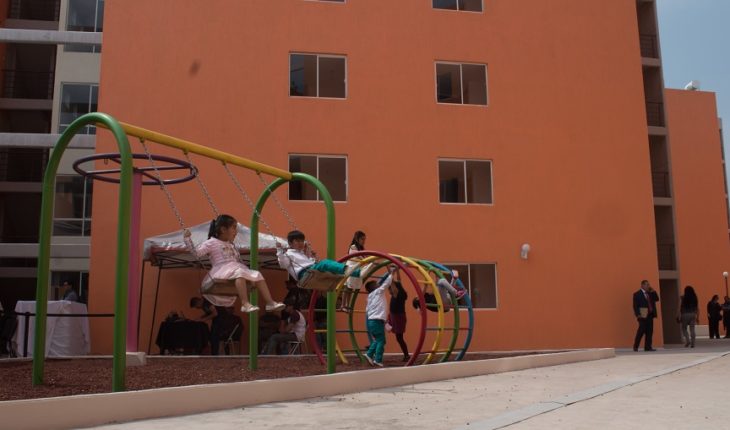Mexicans with lower incomes across the country spend up to 61% of what they earn on paying for where they live and services, while those in the following economic decile, i.e. with more incomes, spend 34% and 30%, reflecting inequality in access to housing in this country as well.
This is noted by the diagnosis of the National Housing Plan of the Secretariat for Social Development (Sedatu) that will define policy in the matter during the six-year term of President Andrés Manuel López Obrador.
Another element of this inequality is that while there are historically discriminated outing programs, they “do not necessarily reach all the people who should have access to them.”
For example, of the total subsidies delivered between 2013 and 2018 by the National Housing Commission (Conavi), 66% were directed towards the acquisition of new housing and the states that received the most subsidies were Nuevo León, Jalisco, Puebla and Quintana Roo with 10%, 10%, 6% and 5% respectively.
In addition, according to a 2015 affordable housing price analysis in 45 OECD countries, Mexico ranks 13th among the countries with the lowest housing affordability.
Addressing the problem of affordability requires addressing the challenge of cost and access to financing, warns the National Housing Program, which in the words of Sedatu owner Román Meyer will not only mark the housing guideline but is “a political and so-called awareness-raising stance.”
Therefore, the program will focus on ensuring the “right to adequate housing” for all, but above all for discriminated and vulnerable groups, such as those who are not rightholders and are therefore not subject to credit from government or banking institutions.
“All credit institutions need to be sensitized that these people, first, are Mexicans, and that they pay on time, and that they too have credits, perhaps not formal, but pay in 48 monthly terms a piece of land. Unfortunately, private banking has stigmatized this population as at risk and not only stigmatizes them but condemns them,” says Secretary Meyer, in an interview with Political Animal.
That is why, he insists, policies are required that address these problems and not only focus on building new housing for the populations that need it least, “when that population has a deficit and does not require new housing, but a credit for improvement or expansion, that is the central point.”
The housing lag due to material deterioration, for example, affected 7.2 million homes in 2016, i.e. 22.0% of all homes in the country, 19.8% of the population is deprived of access to basic housing services and this is where efforts should be directed and not only in the construction of new housing.
“We are not going to stop the housing train, but the train is composed of different trains and a very important one is the improvement and expansion under the modality of technical assistance or assisted self-production, or social self-production,” says Meyer.
Therefore, the goal for this six-year program is to carry out 2.2 million actions to reduce the lag in housing, and 2.3 billion pesos will be invested in the housing industry.
The National Housing Programme 2018-2024 is the first to incorporate the seven elements of adequate housing established by UN-Habitat: security of tenure; availability of services, materials, facilities and infrastructure; affordability, habitability, accessibility; cultural location and adequacy.
This is because access to housing should be understood as “a human right and not an instrument of financial speculation”, argues the sedatu holder.
The Program will generate, for the first time, a comprehensive sorting model.
Territorial because currently between 80% and 90% do not have or do not have updated their territorial planning program.
This is because the lack of legal parameters has led to problems such as the generation of housing in risky areas. In fact, 70% of the inhabitants reside in areas of risk to natural and climatic phenomena; 35% are in flood hazard zones and only 14.7% of homes in the country are in locations that meet adequate housing requirements.
What we do in Animal Político requires professional journalists, teamwork, dialogue with readers and something very important: independence. You can help us keep going. Be part of the team.
Subscribe to Animal Politician, receive benefits and support free journalism.#YoSoyAnimal
translated from Spanish: Poorer Mexicans spend 61% of their income on paying for housing
December 3, 2019 |





